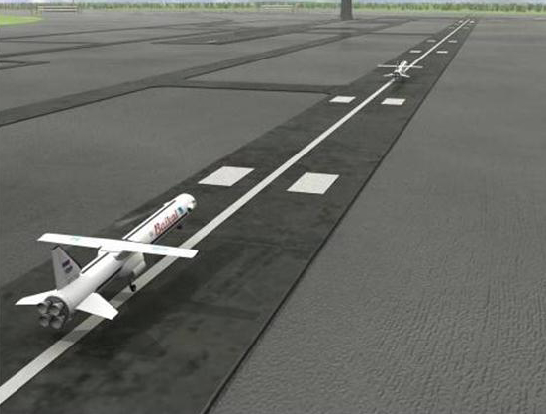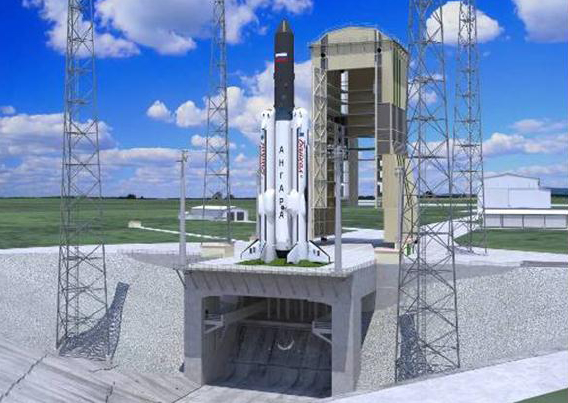Russia Wants Reusable Rockets By 2020

The first flight of a reusable Russian rocket booster that returns to the launch pad under its own power could occur by 2020, Russian space officials say.
The flyback booster, called the Re-entry Rocket Module (RRM), is part of a larger Russian project that aims to develop a partially reusable rocket called the Reusable Integrated Launch Vehicle, or RILV. The RRM would be the RILV's first stage.
The RRM is designed to operate for 100 launches, and its main engine, called the liquid-propellant rocket engine (LPRE), will be initially re-ignitable 10 times, with an ultimate goal of 25 uses. The LPRE will burn liquid oxygen along with methane or kerosene, officials say.
The RRM is being developed for the Russian Federal Space Agency by the Khrunichev State Research and Production Space Center, based in Moscow. [Gallery: 50 Great Russian Rocket Launch Photos]
"We will finish the [RRM booster’s] preliminary design by September 2013, and our next step will be the development of the demonstrator system, which will include an engine like this one [LPRE]," Anatoly Kuzin, Khrunichev’s deputy general director, said Oct. 3 at the International Astronautical Federation’s 63rd congress in Naples, Italy.
The RRM will have four LPREs as engines, Kuzin added. If one fails during ascent, the others will increase their thrust to 130 percent of their normal levels. In addition to conventional rocket technology, the RRM will use aviation components, design philosophies and technologies. After its flight, the RRM will cruise back to its launch site autonomously, using a wing, along with airbreathing jet engines located in its nose.
Two RRM designs are being studied, one with a conventional "pivoting wing" and the other with an aerodynamic "tapered wing." The RRM nose shape is optimized for the aerodynamic needs of re-entry flight and to accommodate the booster’s jet engines, fuel tank, pneumatic and hydraulic mechanisms, and avionics, Kuzin said. The booster’s three-wheeled landing gear is stored in the nose and fuselage. Like an aircraft, the RRM has a vertical fin with a rudder installed in the tail section.
Get the Space.com Newsletter
Breaking space news, the latest updates on rocket launches, skywatching events and more!
The larger RILV rocket that the RRM will power is being developed under the Russian space agency's Phase 1 Reusable Launch System project. The RILV is envisioned to be a family of four launch vehicles that can put between 55,000 and 132,000 pounds (25,000 to 60,000 kilograms) of payload into low-Earth orbit (LEO).

The 55,000-pound version uses a single, two-stage core and one RRM. The 77,000- and 99,000-pound RILV models use a similar core, but incorporate two RRM boosters instead of one. The 132,000-pound variant uses a longer two-stage core and two RRMs, Kuzin said. The RILV core stage will likely also use the LPRE, which has been in development since 2006.
The RRM will separate from the RILV core stage at an altitude of up to 34 miles (55 kilometers) above the launch site, while travelling at about seven times the speed of sound, officials say.
The RRM will then carry on in a suborbital coast. When it descends to an altitude of about 12 miles (19 km), it will tilt its wing and engage in a turning maneuver using its jet engines. The booster will then cruise home to the launch site’s runway, probably from a distance of about 93 miles (150 km).
The U.S. Air Force Research Laboratory announced a similar project in 2011 called the Reusable Booster System. The American version would also employ a reusable first stage that could fly back to a runway at the launch site. Instead of using airbreathing jet engines, however, the U.S. craft would rely on its rocket engine to decelerate after staging, then use that engine again to cruise back to the runway. No date has been given for launching a demonstrator system for the U.S. version.
Follow SPACE.com on Twitter @Spacedotcom. We're also on Facebook & Google+.
Join our Space Forums to keep talking space on the latest missions, night sky and more! And if you have a news tip, correction or comment, let us know at: community@space.com.
Rob Coppinger is a veteran aerospace writer whose work has appeared in Flight International, on the BBC, in The Engineer, Live Science, the Aviation Week Network and other publications. He has covered a wide range of subjects from aviation and aerospace technology to space exploration, information technology and engineering. In September 2021, Rob became the editor of SpaceFlight Magazine, a publication by the British Interplanetary Society. He is based in France. You can follow Rob's latest space project via Twitter.









